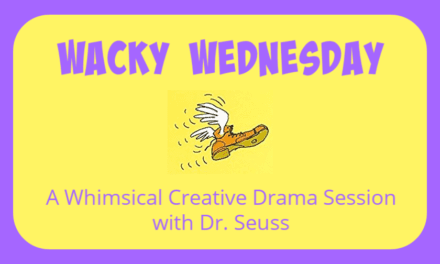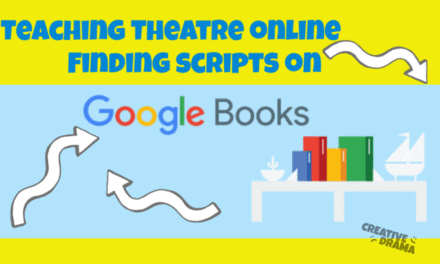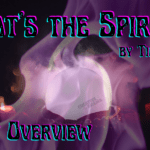When choosing books for creative drama sessions, trust your instincts. If the story and illustrations are appealing and inspiring to you, your excitement and engagement with the book will enhance your reading of it. Your class will respond.
I’ve listed a few titles that have inspired me below; there is a running theme of imagination and artists in the books.
The Tin Forest by Helen Ward
In The Tin Forest, a man lives in a place “filled with all the things that no one wanted” – a junkyard – and dreams of making it into a better place. The steampunk-influenced illustrations show the environment in a palette grey tones that turn into glowing colors as the man turns his vision into reality.
Katie and the Mona Lisa by James Mayhew
While Katie’s grandmother takes a snooze, Leonardo da Vinci’s Mona Lisa invites the little girl into her portrait. The pair soon leave Mona’s frame, and travel into other Renaissance paintings, being chased by a dragon, ruining the dance in Botticelli’s Primavera, and riding on a flying lion’s back. Creative drama participants could take the parts of characters in other Renaissance paintings as well as the museum visitors who are looking at the art.
Also by James Mayhew:
Katie and the British Artists
Katie and the Bathers
Katie and the Starry Night
Katie and Spanish Princess
Katie and the Impressionists
In James Mayhew’s Katie and… series, the title character has adventures with paintings every time she visits a museum. The portraits talk to Katie, and sometimes escape from their frames. Katie steps into paintings, gets chased through paintings, and occasionally causes disasters. There are 13 titles in the series.
Frederick by Leo Leonni
The titular mouse in Frederick is a poet, and his story helps explain the necessity of artists in society. Frederick uses guided imagery to comfort his family, and composes a poem about the four seasons that students could easily interpret. Leonni’s torn paper illustrations can serve as an example for a great messy art project for a class.
NOTE: The above link is the Step Into Reading edition of this book; the illustrations are cropped a little from the hardback edition I own. It would be harder to show to a class in this smaller version.
The Big Orange Splot by Daniel Manus Pinkwater
On a street where all the houses are the same, a serendipitous “big orange splot” lands on one of the houses. The neighbors are certain that the homeowner will repaint his house, but he surprises everyone. The story emphasizes individuality, creativity, and dreams through the expressions of the residents on the street.
Tuesday by David Wiesner
Wiesner’s Caldecott Medal-winning illustrations tell the story of…well, it’s not certain, but there are frogs flying around a neighborhood on their lily pads! In addition to taking on the roles of the frogs and the people and animals they encounter, the class could create a story (or several!) of “what happened to make the frogs start flying.” Or, (SPOILER ALERT!) they could imagine what happens when the pigs start flying after the last page.
Also by David Wiesner:
June 29, 1999
Free Fall
Sector 7
David Wiesner specializes in telling great tales with few words, and they’re great for inspiring the imaginations of children. A girl’s science experiment results in giant flying vegetables. A dreamer travels to a far-off land. A boy’s trip to the top of the Empire State Building leads him to a cloud factory.
Journey by Aaron Becker
When a bored girl’s family is too busy to play with her, she uses her imagination to travel to a fantastic kingdom. She has a magic crayon providing assistance on her journey, and her adventure has an amazing combination of peril and beauty. The book has no text; the illustrations tell the story. It could be an introduction to the imagination journeys a creative drama class often takes. Or it could serve as an example of telling a story without words; how would the students do something similar but dramatically?
Also by Aaron Becker:
Quest
Return
These are the sequels to Journey; if your students loved the first book, they will likely enjoy the continuation of the protagonist’s story.
Humpty Dumpty Climbs Again by Dave Horowitz
A funny story of resilience and overcoming adversity featuring arguably the most well-known egg in literature. This could be part of a “Nursery Rhyme” theme; a possible activity could ask the participants to imagine what happens after the events in “Jack and Jill,” “Hickory Dickory Dock,” or “The Noble Duke of York.”
Weslandia by Paul Fleischman; Illustrated by Kevin Hawkes
Weslandia is a great for an older creative drama group; a “brainy” young man designs his own civilization as a summer project. Wesley creates an amazing and successful culture, and even gets the neighborhood bullies to join “Weslandia.” The book could be used in conjunction with a social studies unit and inspire a longer form improvisation for a class.









